Ever heard of row houses? They are identical low-rise homes built side-by-side in a row. Each is a single residential unit with its own living space and entrance. This design dates back to 16th-century Europe, mimicking houses in the colonial era. If you are someone who grew up in a big house, moving to an apartment may be displeasing. That’s where a row house makes a big difference. It merges the feel of both community living and an independent space of your own.
Space is limited, and property prices spike with each passing day. Many people cannot afford to build a house in urban settings. This answers the growing demand for row houses in urban areas. They offer a unique mix of comfort, smart use of space and privacy that fits your budget. From traditional to luxury, their varieties abound. Read on to explore row houses, their types, features, advantages and limitations. Learn how they stand out from other options and make an informed decision when choosing your dream haven.
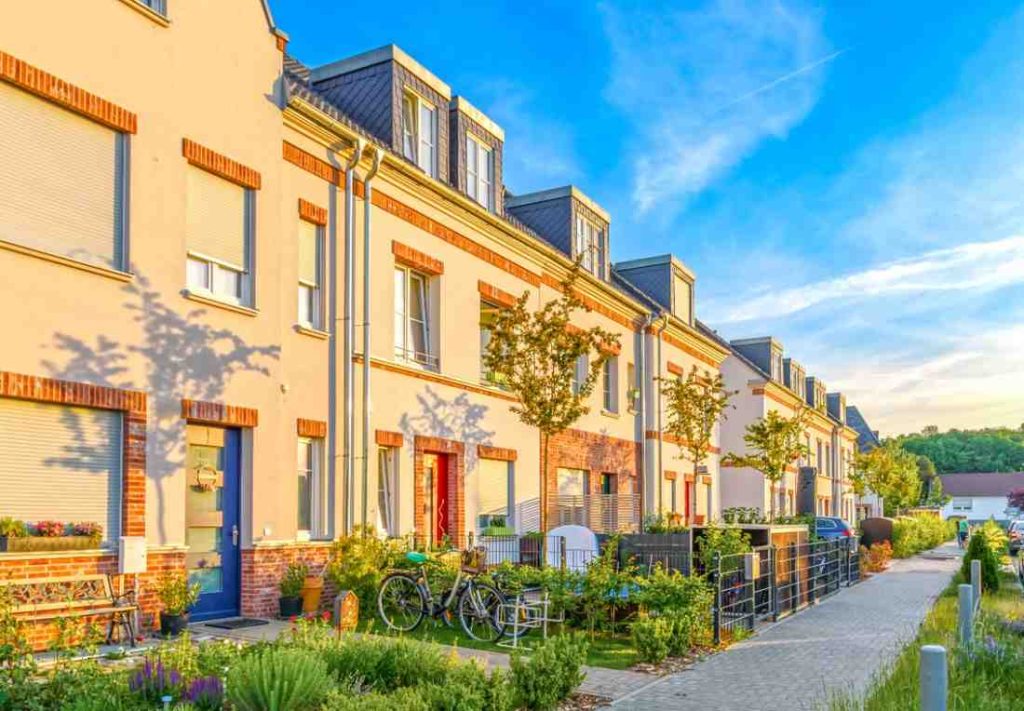
A row house is a kind of residential design where look-alike homes are built side by side. As the row house meaning suggests, the houses are lined up in a row or straight line. They may be identical or nearly identical. Nevertheless, each home is an independent unit with its own entrance and living space. However, it may share a roofline and one or two side walls with adjacent homes.
When considering what is a row house good for, it helps save land or space and provides an affordable solution for independent living in good neighbourhoods. Row houses root back to the early modern European housing culture. Even today, you can find a generous presence of this design in more adorable aesthetics in many parts of the world. Netherlands, Belgium, USA, UK, Canada, Japan and India, to name a few.
For example:
While they are known as ‘row houses’ in Canada and the USA, the term ‘terraced houses’ is popular in Australia and the United Kingdom.
The most striking feature, as their name implies, is that these are houses in row, or a straight line. Typically, attached row houses share one or both side walls and the roofline. Besides, they have an identical or uniform architectural design. These houses use space smartly while giving ample amount of space in individual units. Whether you’re a couple or a small or medium family, you can enjoy comfort and privacy as if in an independent home.
Below are the key features that define row homes:
When buying a house, individual preferences, aspirations and budget concerns vary. While row homes help you draw the benefits of urban living, they do not compromise what you might expect in your dream haven. For that, both styles and types of row houses abound for you to choose one that best aligns with your lifestyle.
Row homes can be classified based on their architectural style as well as structure. A row of houses can be traditional, modern or even luxury. Some are designed for smart spacing in cities, while others are perched in peaceful suburbs. A contemporary row house tunes to trendy designs and aesthetics. Whereas classic styles ooze the good old charm. Each offers a unique ambience for cosy urban living. Let’s explore their classifications one by one!

Row homes can differ in terms of their architectural style and place of origin. These include:
Below are the different types of row houses based on their structure and focus location.
They are designed with a uniform, classic look. Traditional row house homes are usually constructed close to the street and share walls with each other. They are common in older cities in different parts of the world.
Key Features:
Modern row houses are all about smart design and comfort. They have clean lines, large windows and modern features. Modern row house elevation reflects a stylish and eye-catching look to make best use of space for cosy living. A row house modern design often includes smart features like solar panels, home automation with lighting and security systems, space-saving solutions for multi-floor layouts.
Highlights:
Looking for luxury living in urban settings without breaking your wallet? Yes, luxury row houses are here to offer exactly that! They are high-end versions that provide better space, comfort and premium features unlike regular row homes. These row house homes are found in well-planned communities. Typically, they have access to facilities like clubhouse, gum or swimming pool.
Key Highlights:
You can find row houses in a city as well as a suburban area. But they may differ in how they align with different lifestyles. Urban row homes are typically located in cities, offering easy access to amenities like public transport, work and shops. Suburban ones are built in quieter neighbourhoods with more greenery and open spaces.
Choosing between these two depends on whether you love the city buzz and prefer convenience over a serene ambience. Below is a quick comparison:
Urban Row Houses:
Suburban Row Houses:
Here are some examples of row home types based on the way in which they are built and arranged, rather than style or luxury:

Planning to buy a row house in India? It is vital to know how well it aligns with your lifestyle, preferences and budget for years to come. Like any other housing option, row homes bring along advantages as well as challenges. Knowing the pros and cons of row houses can help you make an informed decision.
If you are looking for a stylish, comfortable living, in the city or the suburbs, buying an independent house or villa is not the only option. Row houses have you covered with a range of benefits:
Like the flipside of a coin, there are some limitations with a row home. Knowing them is vital to see if it truly aligns with your expectations. The main disadvantages of row houses include:
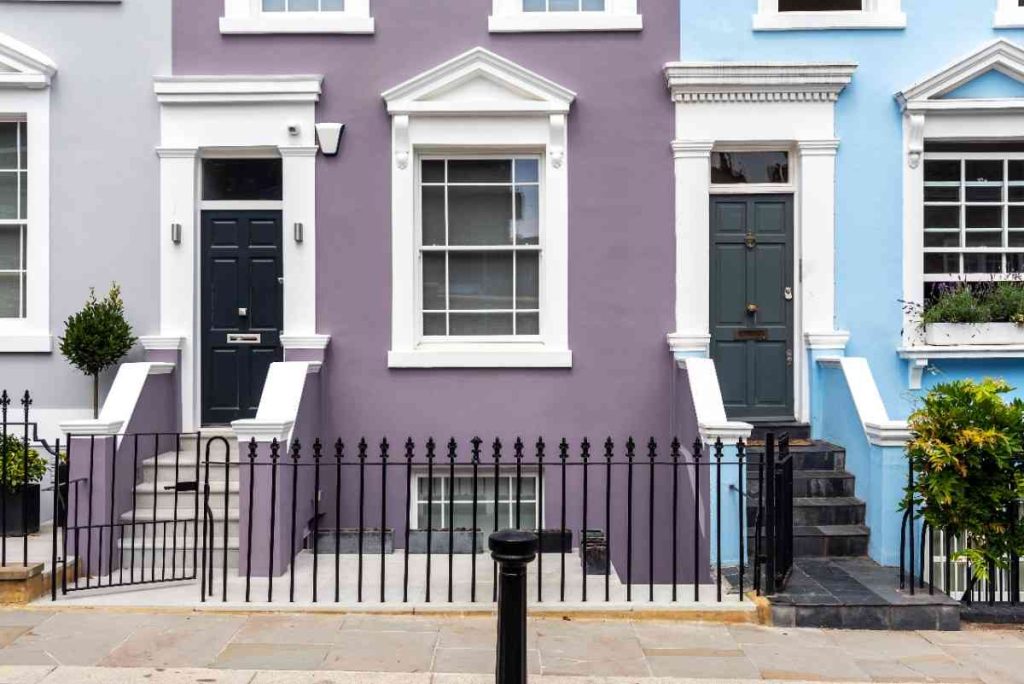
Now, what is the key difference between row house and villas, apartments and condos? A row house comes between apartments and villas in terms of space, cost and privacy. Despite shared walls with neighbours, it offers a decent degree of privacy with separate doors and spaces. But, when it comes to row house vs villa, a row home is not as spacious, private and flexible.
Below is a detailed comparison:
| Feature | Row House | Villa | Apartment | Condo |
|---|---|---|---|---|
| Structure Type | Multiple houses/units in a row, shared walls | Standalone luxury home | Multiple flats or homes in one building | Multi-unit building where units are owned |
| Ownership | Land + building of owned unit | Larger land + building | Own building unit only | Own building unit; shared ownership of common areas |
| Land Size | Small private plot | Larger plots | No private land | No private land |
| Privacy | Moderate | Very High | Low | Low to Moderate |
| Price Range | Budget-friendly to mid-range | Typically Expensive | Affordable to premium | Mid to premium |
| Amenities Access | Limited private amenities | Luxury amenities | Shared amenities | Shared premium amenities |
| Ideal For | A low-cost urban home | Premium lifestyle | Urban living & convenience | Modern & urban lifestyle |
Further Reading: Flat vs House
Row Houses in India: Trends and Demand
Row houses are gaining popularity in India. Many homebuyers like the mix of privacy and community living they offer. As cities continue to grow and space keeps reducing, opting for row houses in India is considered a smart move by many. Moreover, urbanisation, hybrid work culture and the need for a better lifestyle make row homes an attraction for modern families.

Key Trends
Reasons for High Demand
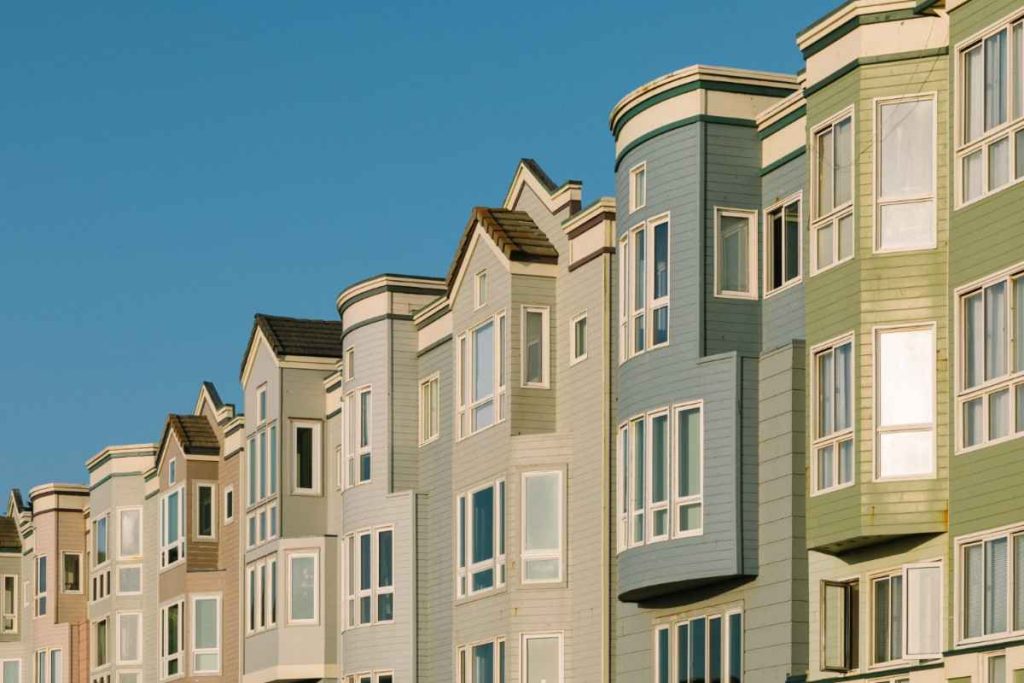
The right choice of your dream home depends on your needs and lifestyle. Consider the space you want, the location and the community you like. Rechecking the key difference between villa and row house can help. Here are some tips to help with a smart choice:
Smart design can help make a row house home feel more stylish and roomy. Proper planning enhances light, airflow, and storage and makes your home feel more modern and cosy. Here are some ideas to enrich your living experience in a row home:
A row house strikes the perfect balance of privacy, independent living and community vibe. With the right choice of design, type and location, it can be the perfect haven for you. Whether you prioritise affordable living, or modern lifestyle or luxury, row homes are a great choice with escalating investment value.
For more home-buying tips, expert guidance and high-end services, partner with Confident Group. Our legacy and thousands of happy families, homebuyers and investors are a testament to our seasoned expertise. Explore our blogs for more insights on real estate projects and topics.
1. What is meant by row house?
It is a house built side-by-side in a row with other identical houses. Adjacent houses share side walls but have their own doors and small outdoor spaces. Each acts as an independent house.
2. What is the difference between a row house and a townhouse?
Both have shared walls, but row homes usually have a more uniform look and are often smaller in size than townhouses.
3. Which is better, a row house or a flat?
Flats are cheaper but can have space limitations and shared amenities. Comparatively, a row house gives more privacy and space. The choice depends on your budget and lifestyle.
4. What is the difference between a row house and a bungalow?
A bungalow is a fully detached and large independent house with no shared walls. Row houses share walls with adjacent or neighbouring houses on both sides.
5. What are the advantages of row houses?
Row homes provide an ideal cost-effective housing option in urban settings and optimise space usage. They provide privacy as well as a sense of community living.
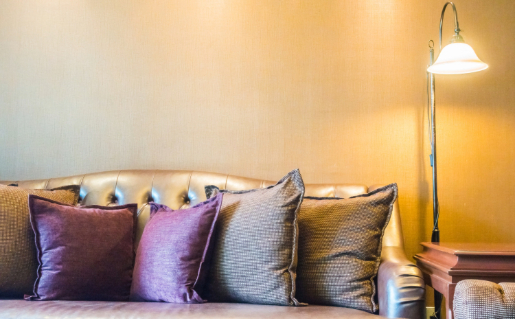
Understanding the difference between warm light vs cool light is key to designing a comfortable, visually appealing home. Many homeowners wonder, “What is cool light and warm light?”, es...
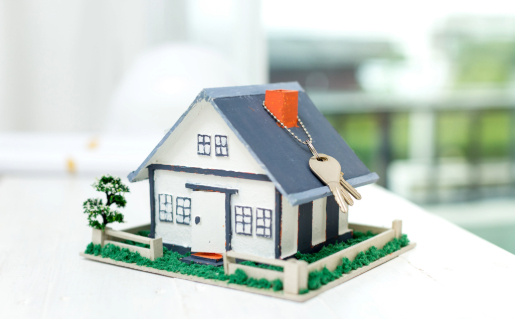
Imagine you’ve spotted a property that makes your heart skip a beat. How do you convey to the seller that you’re serious without jumping straight into a contract? That’s where an Expre...
Comments